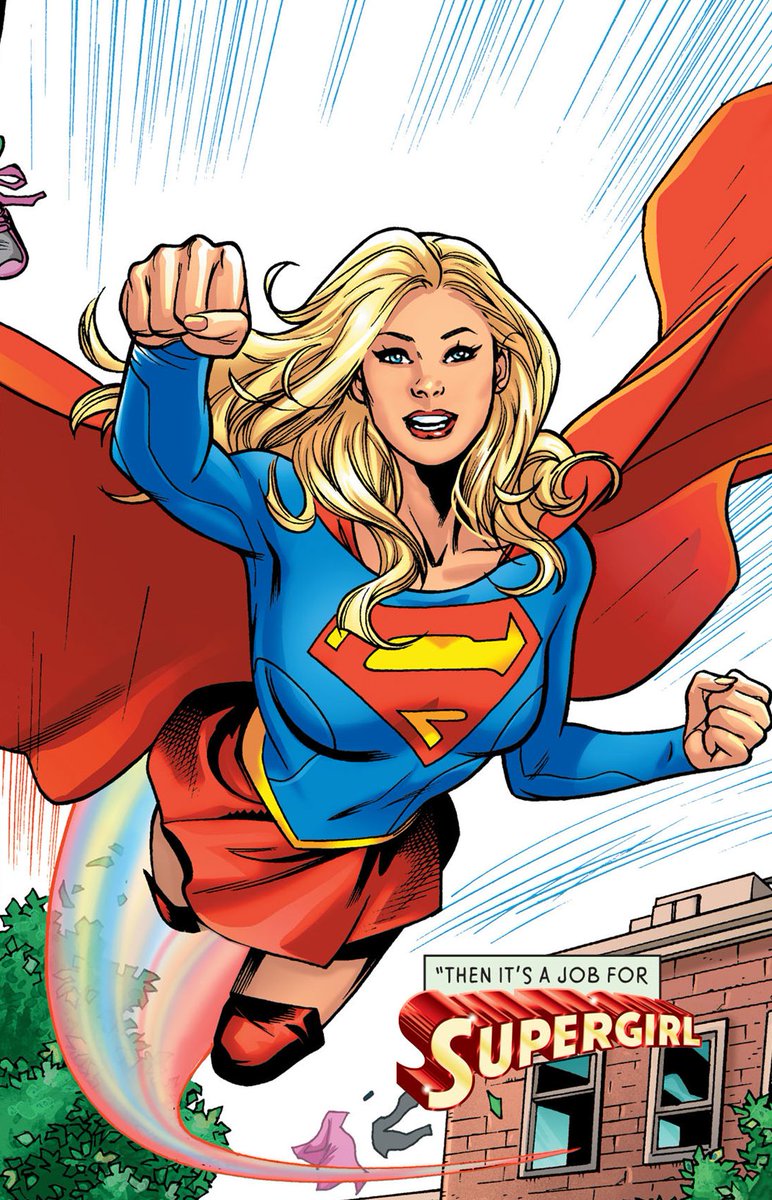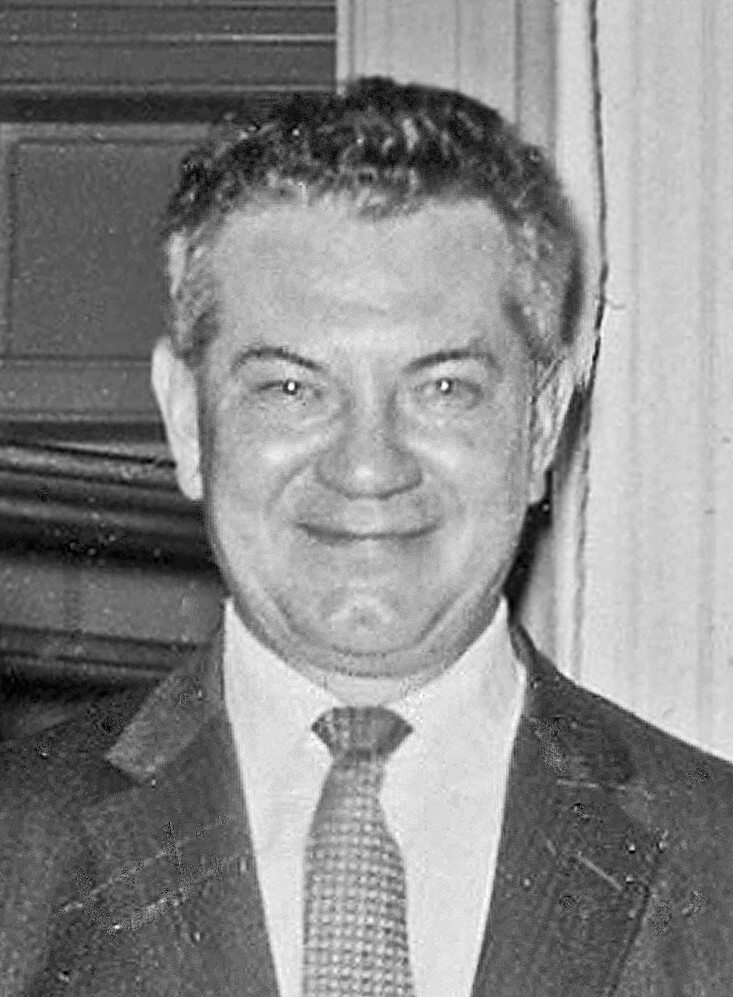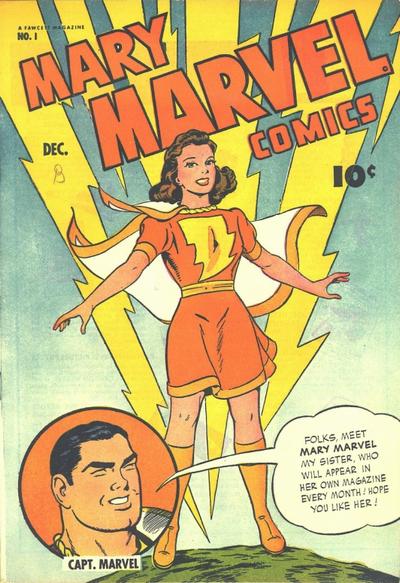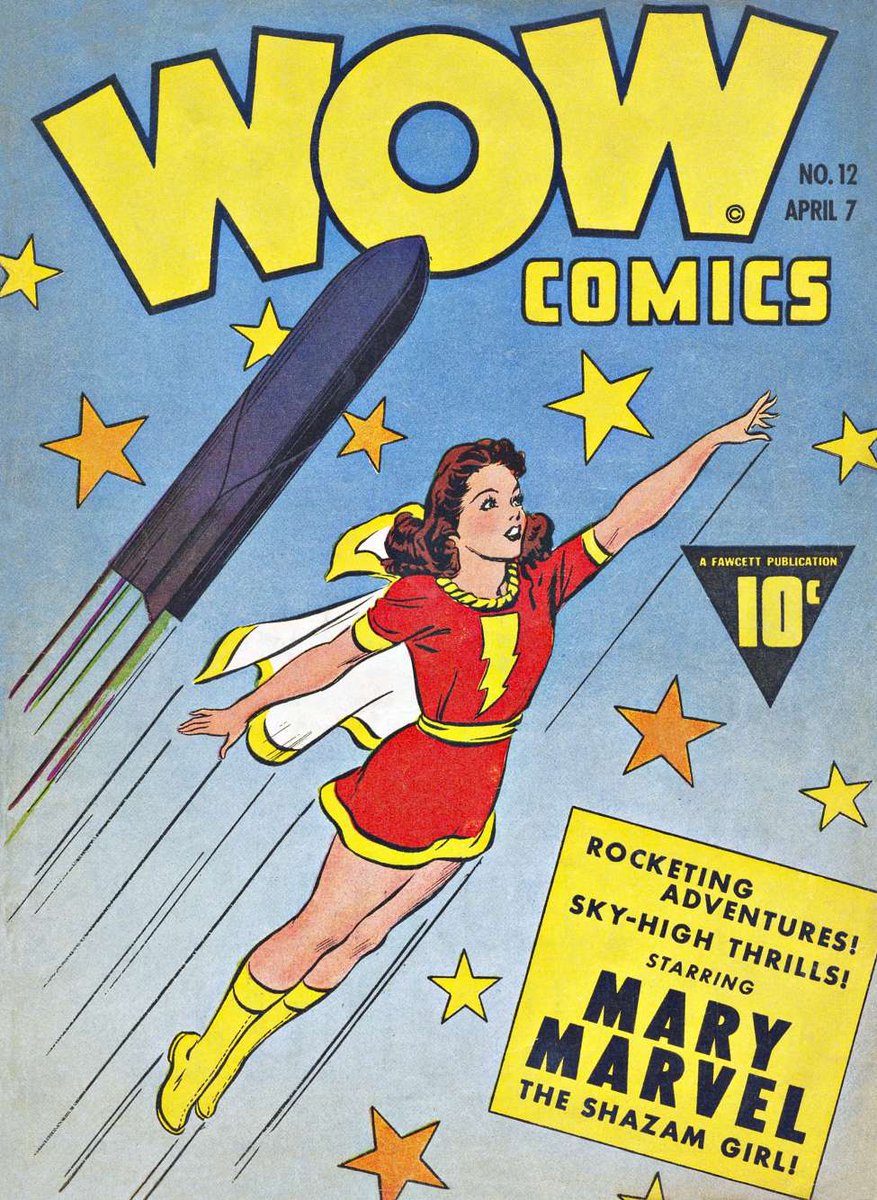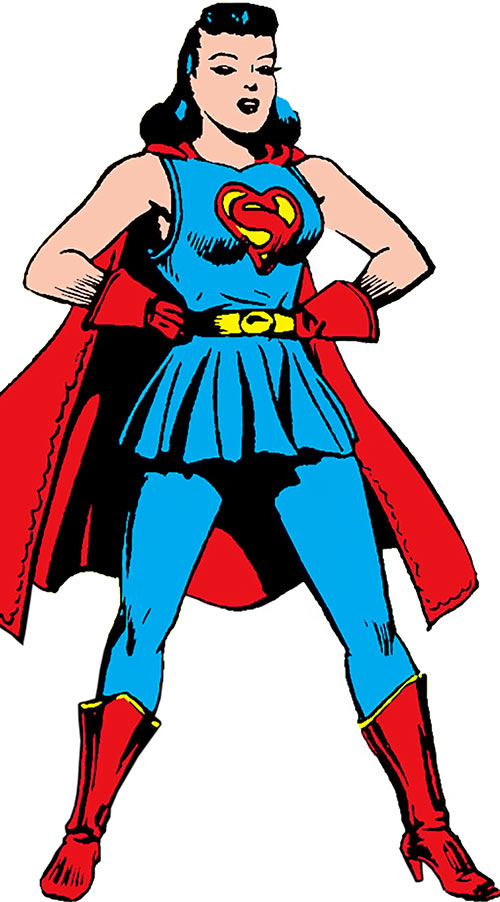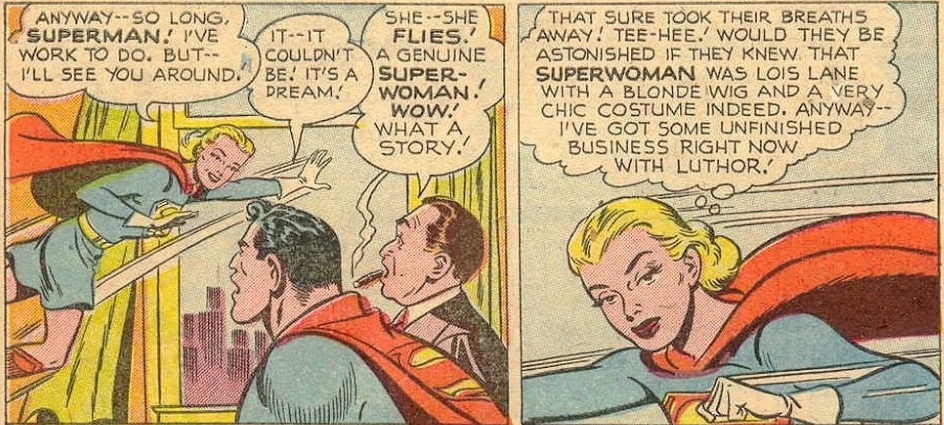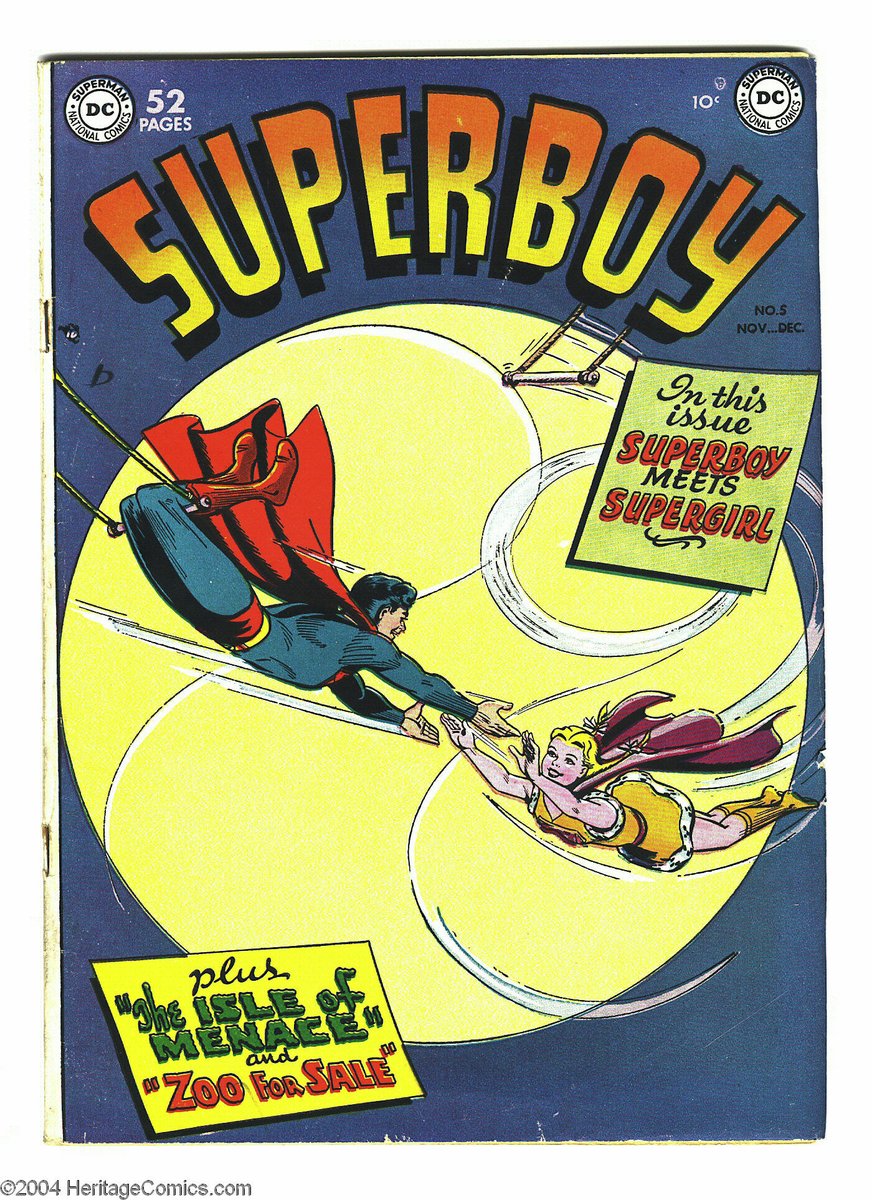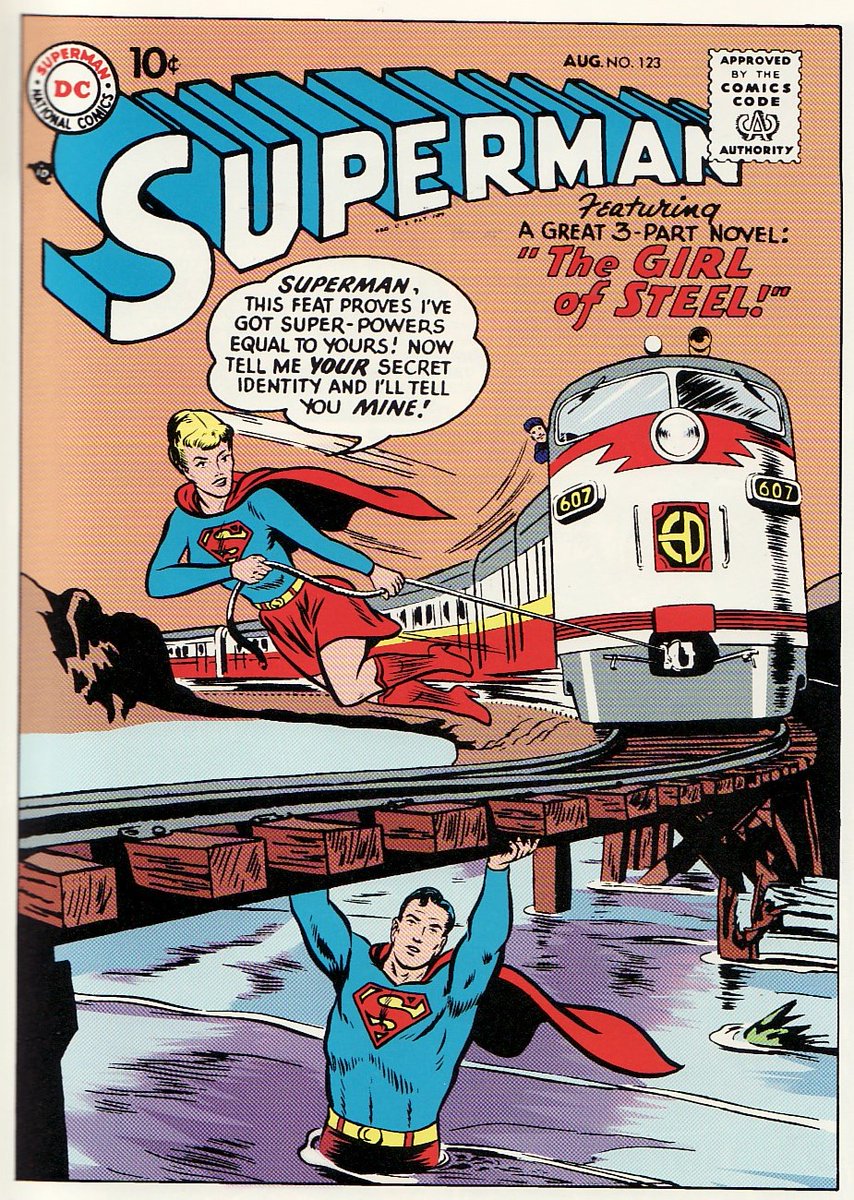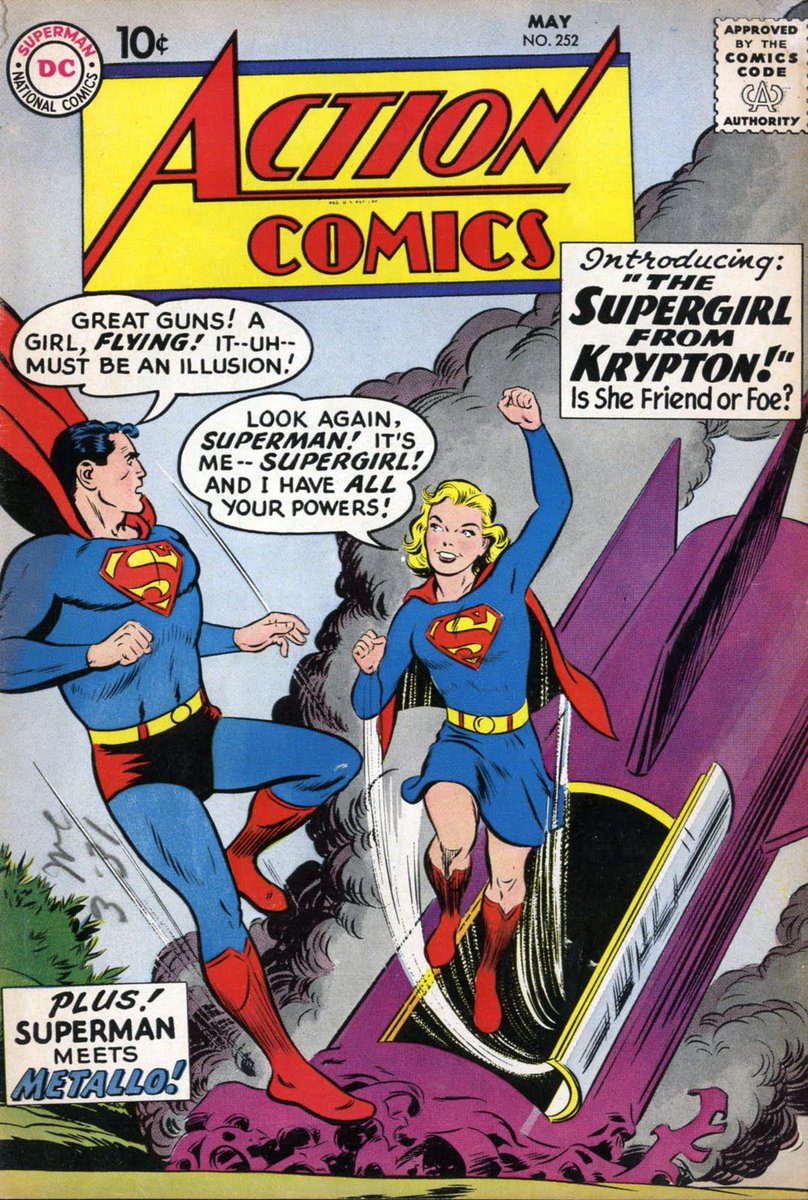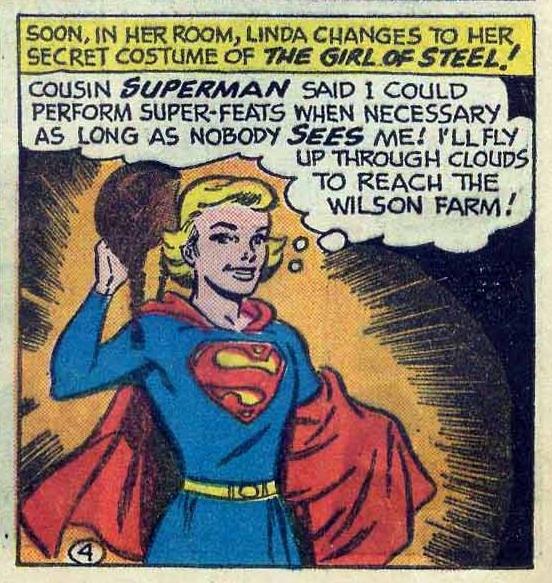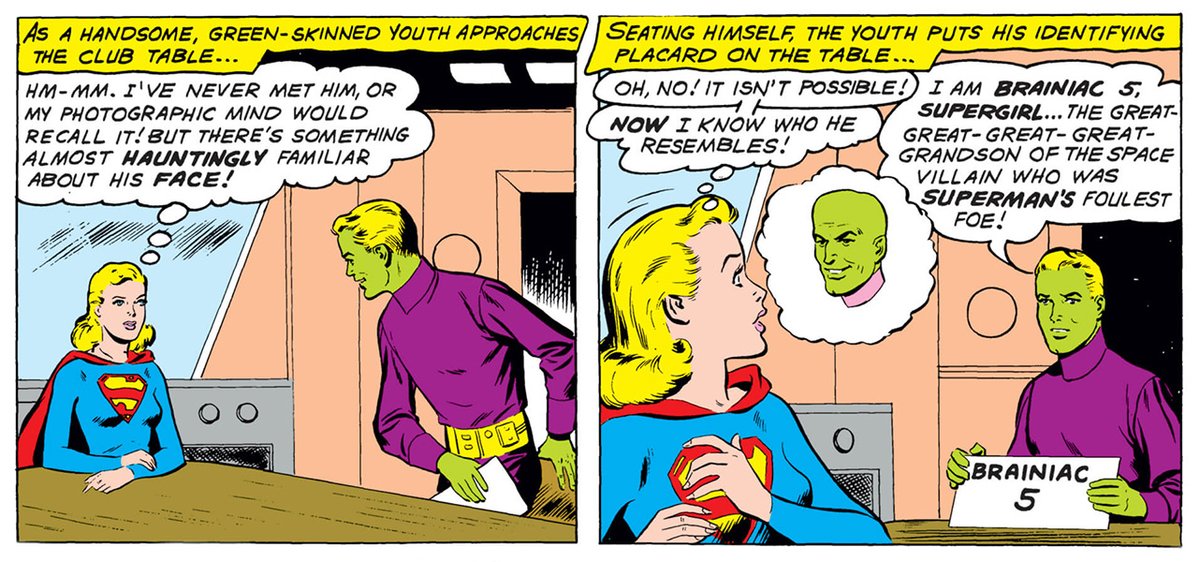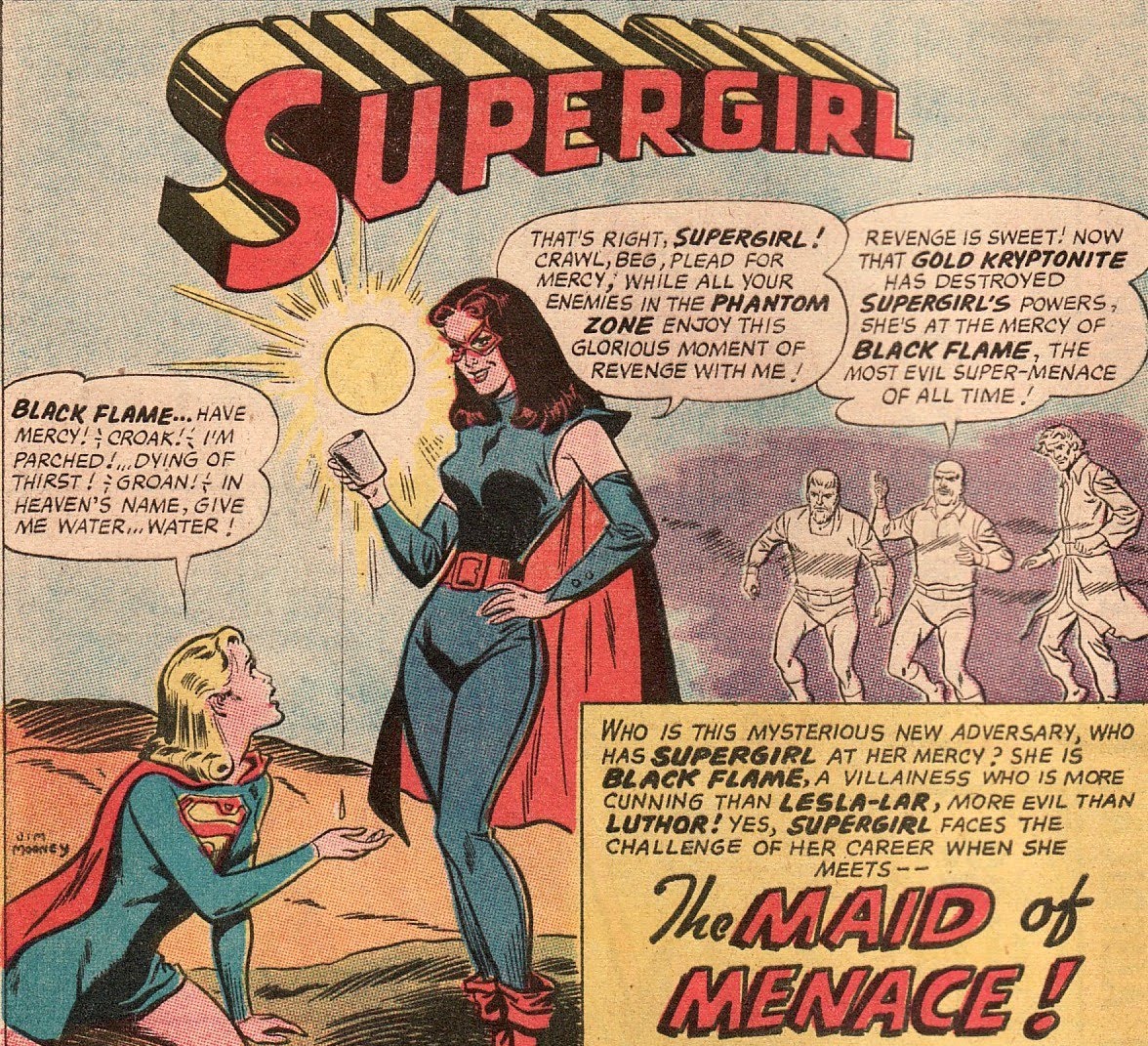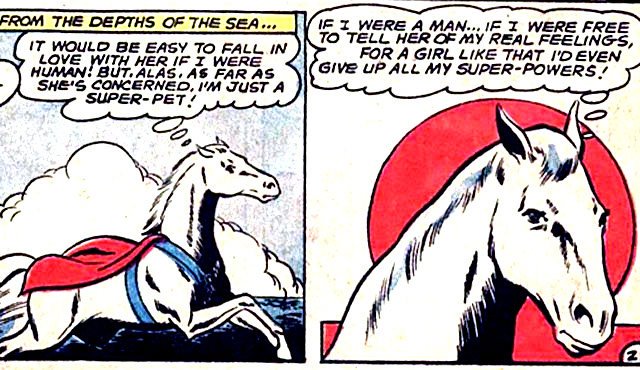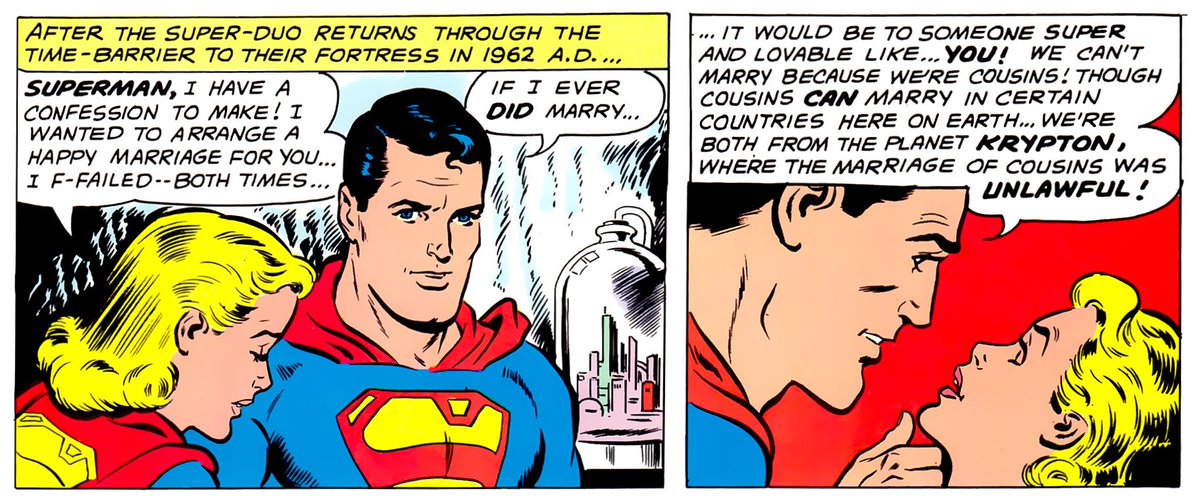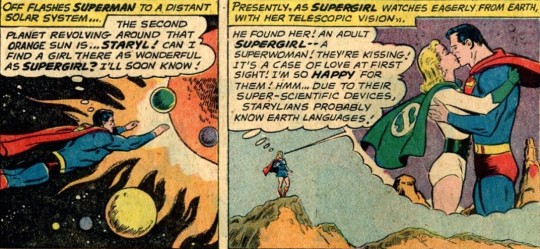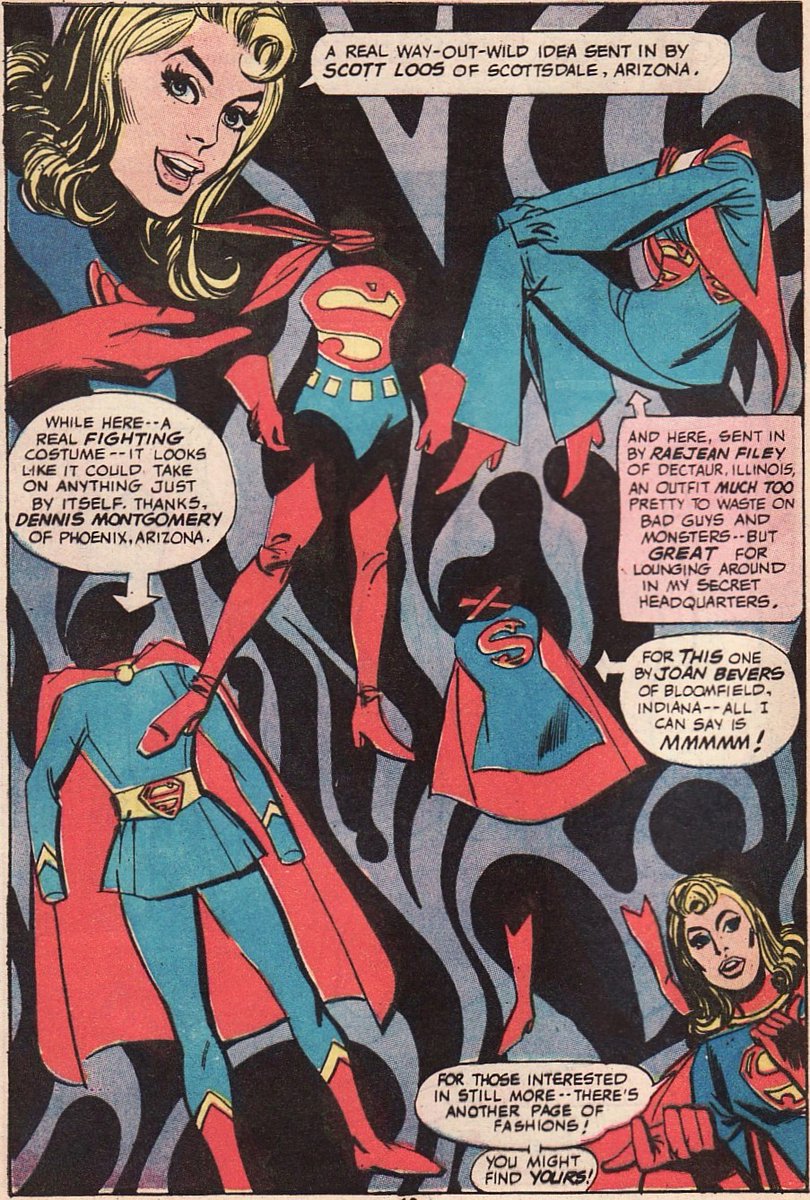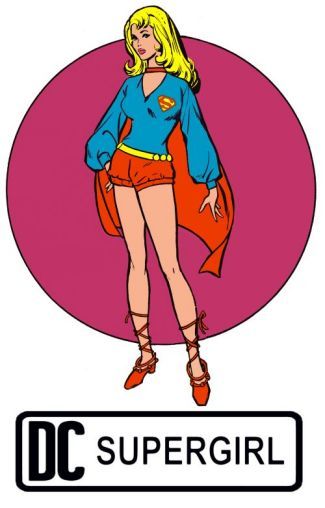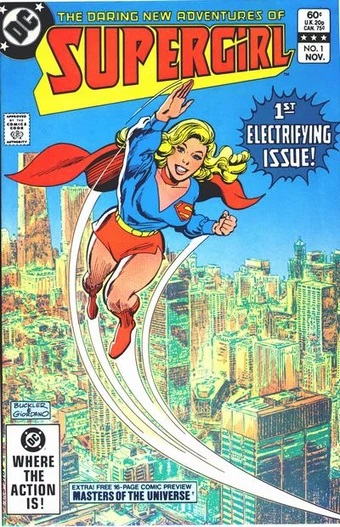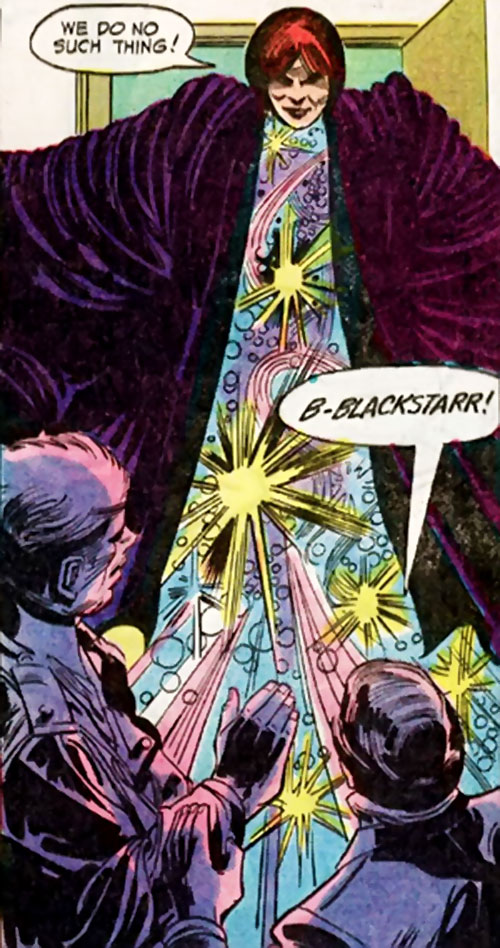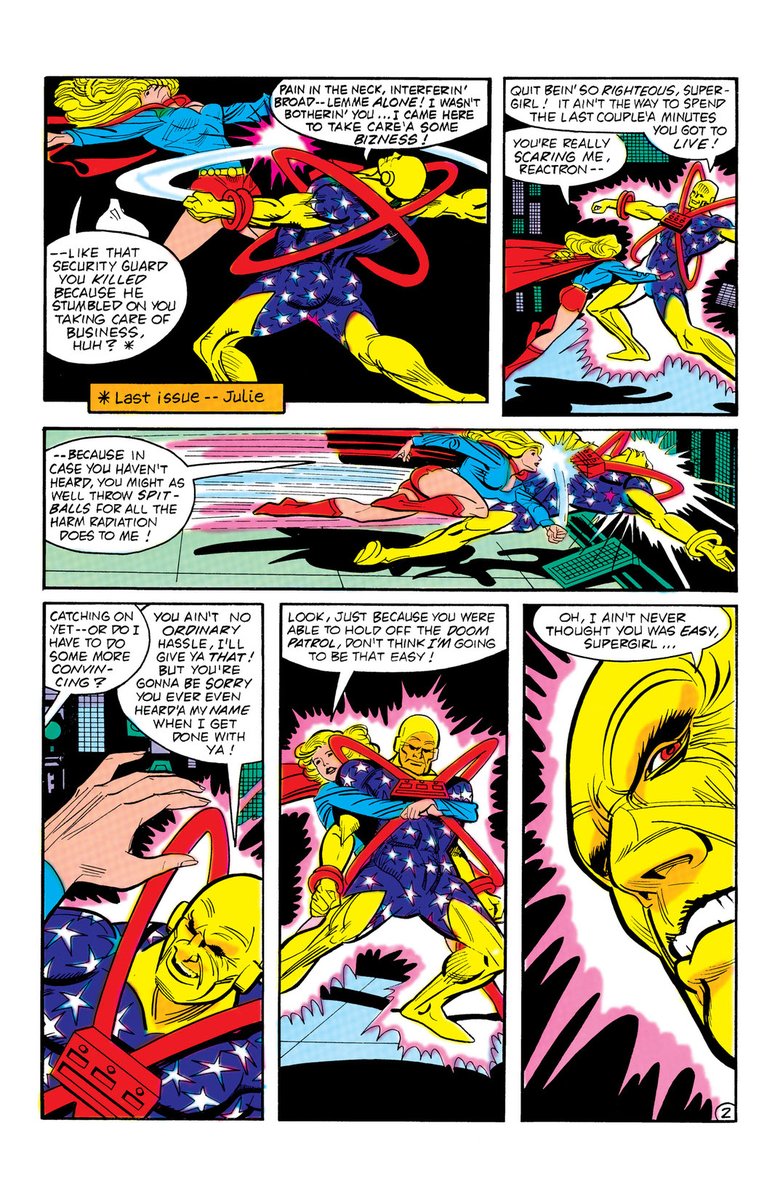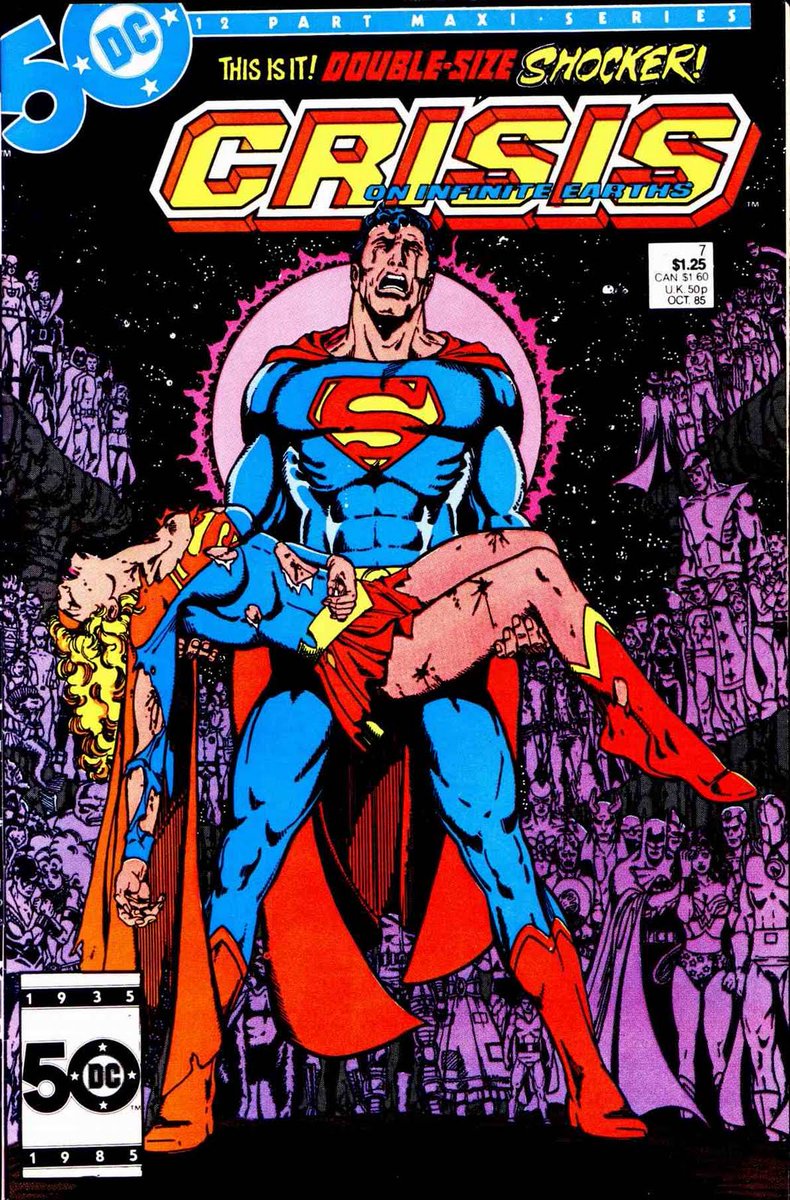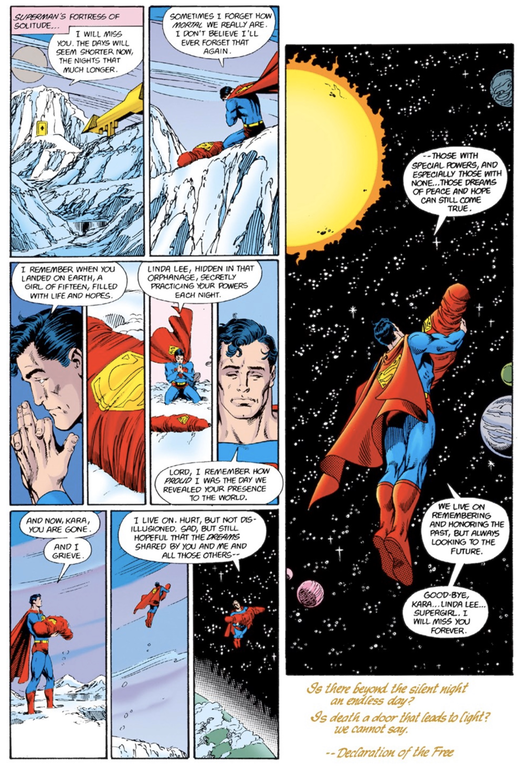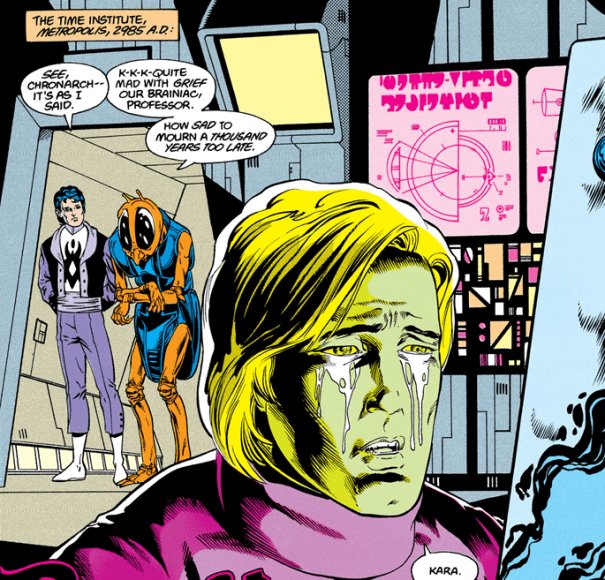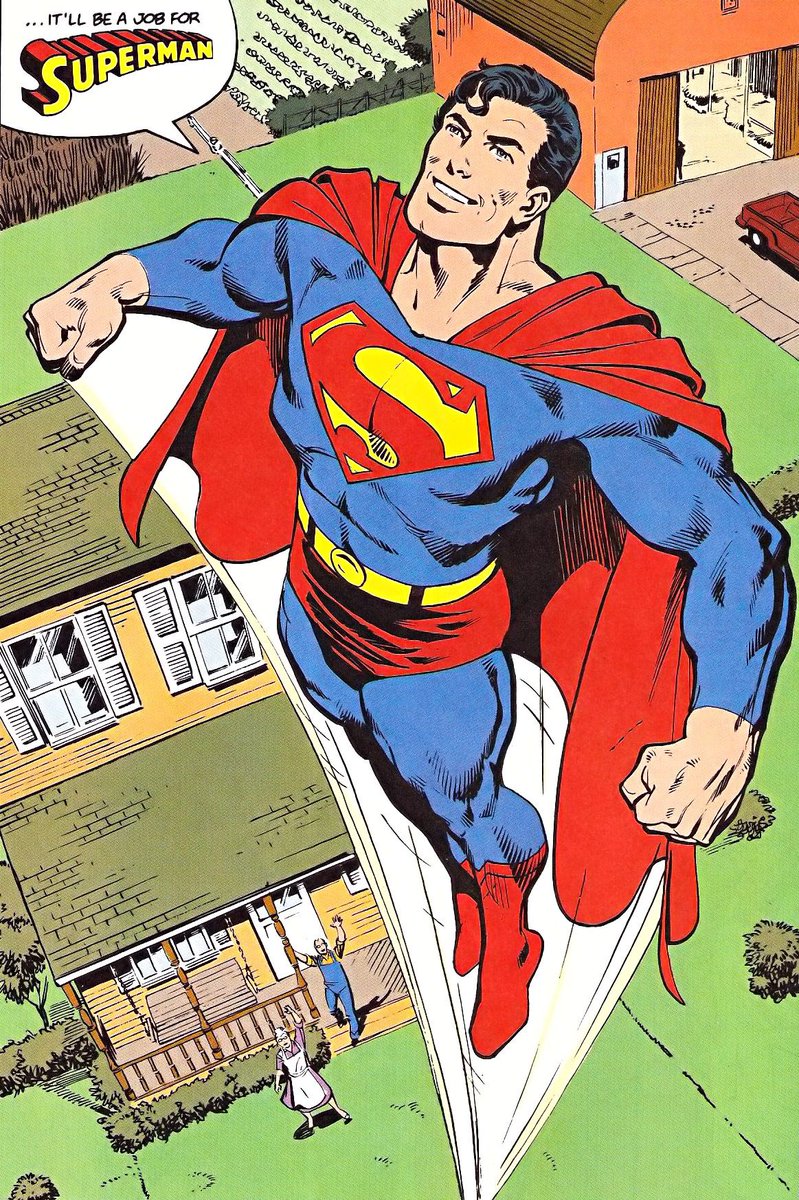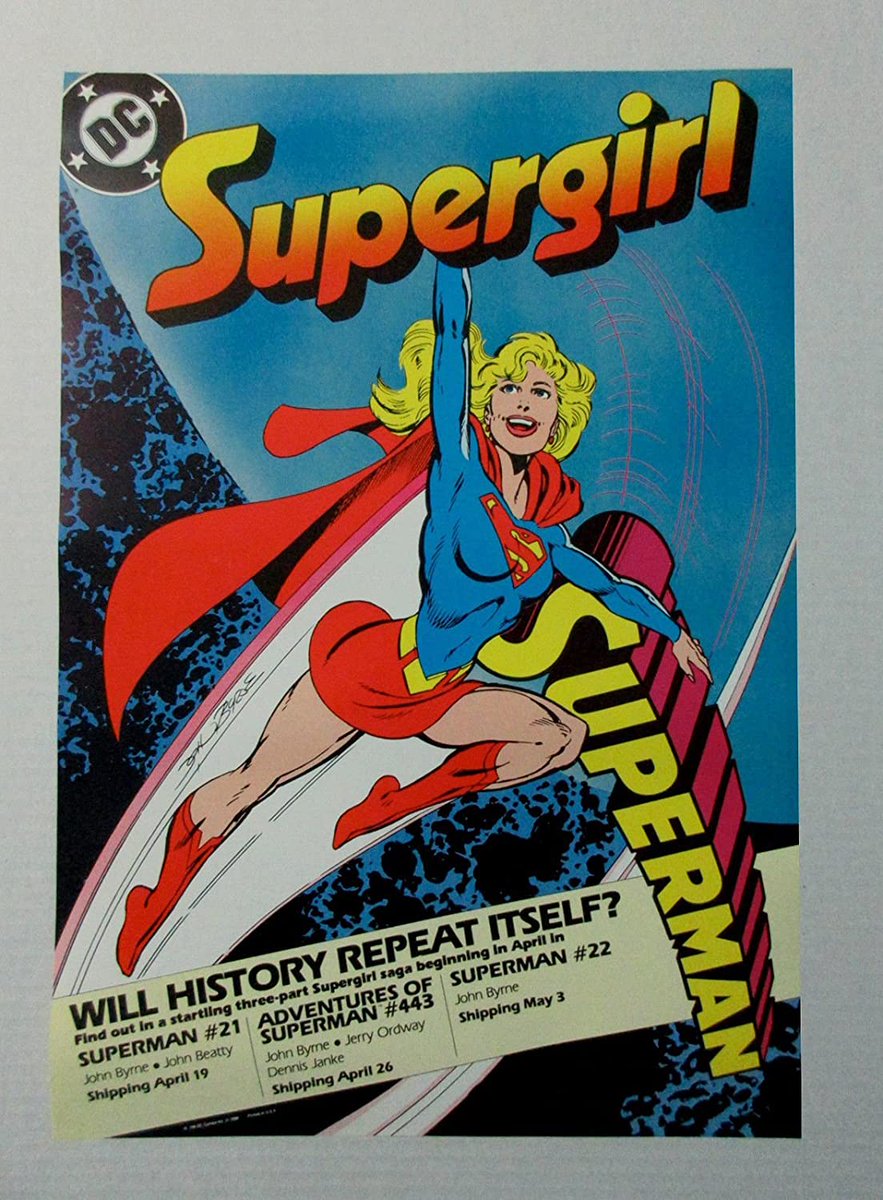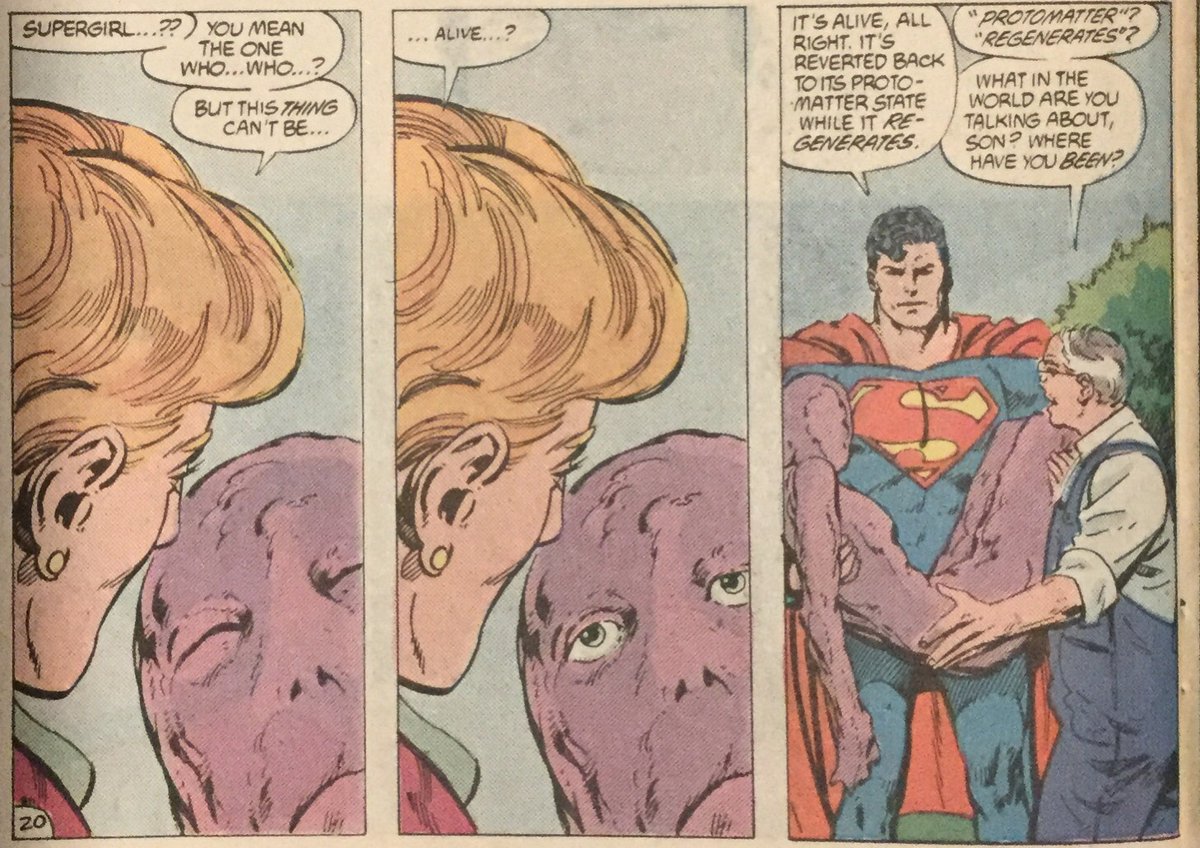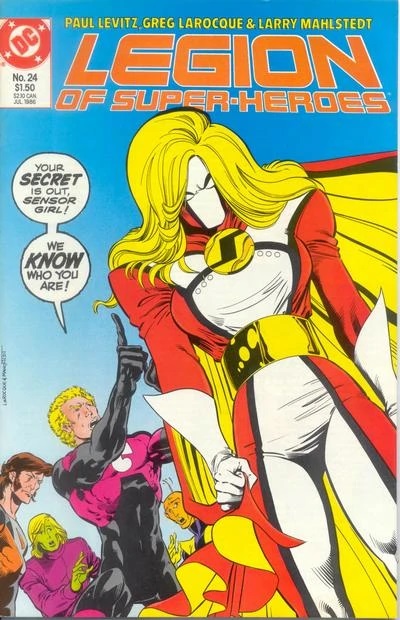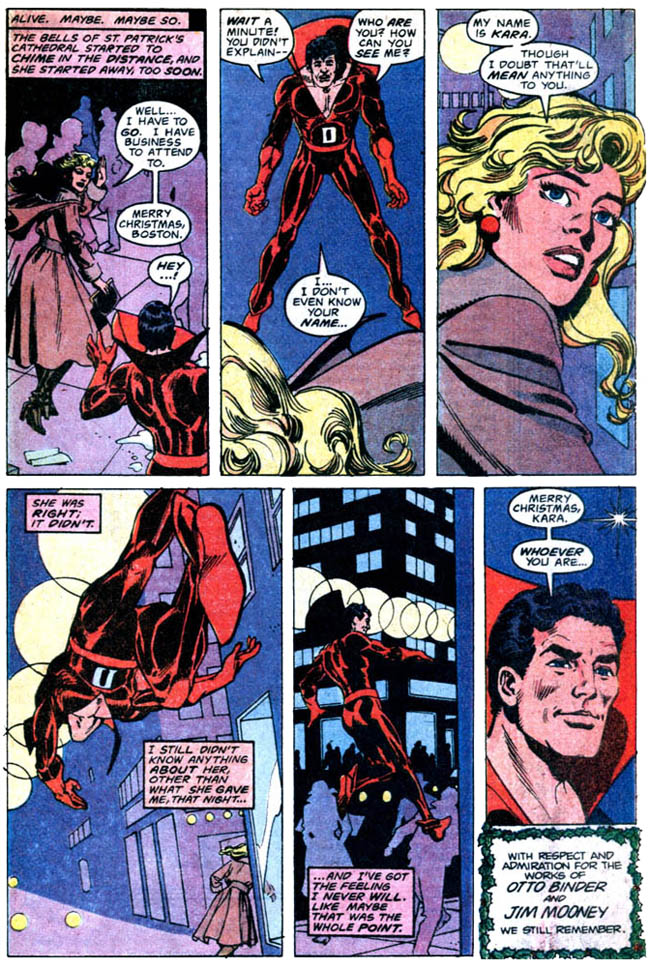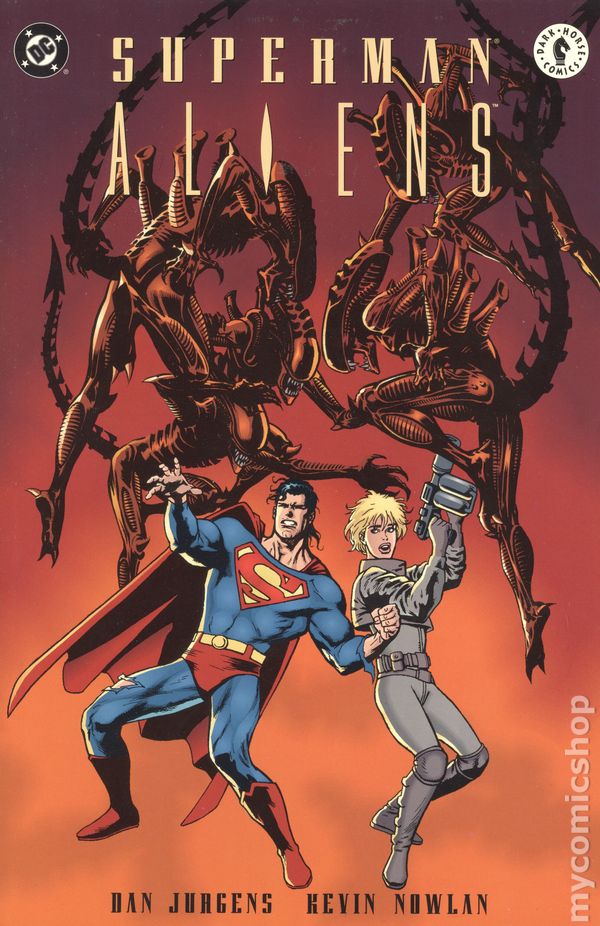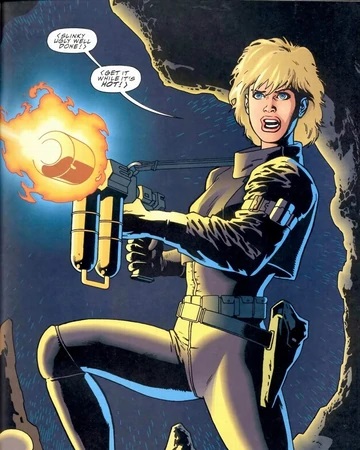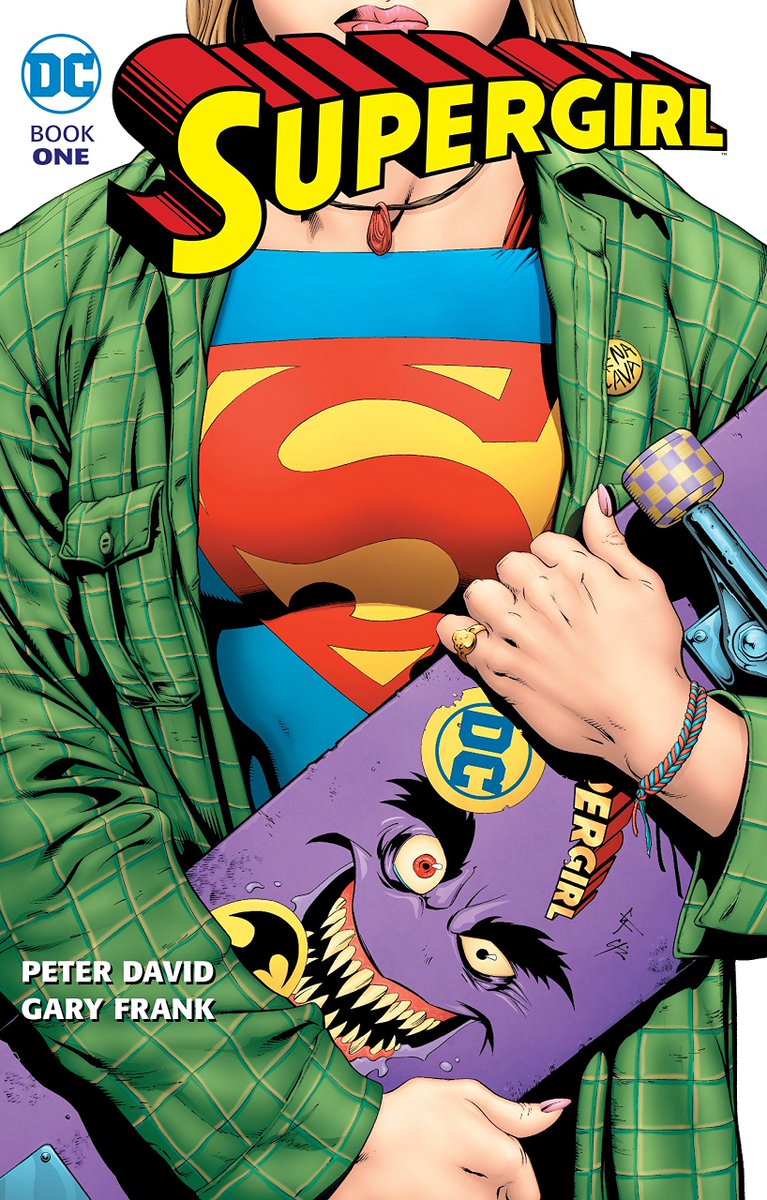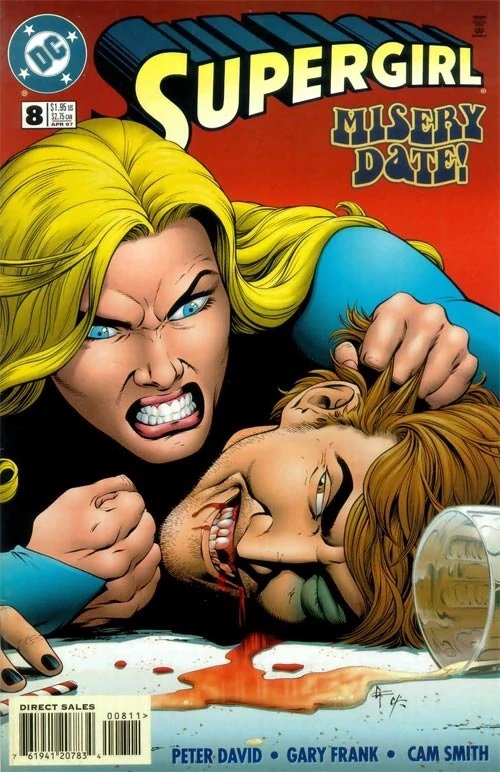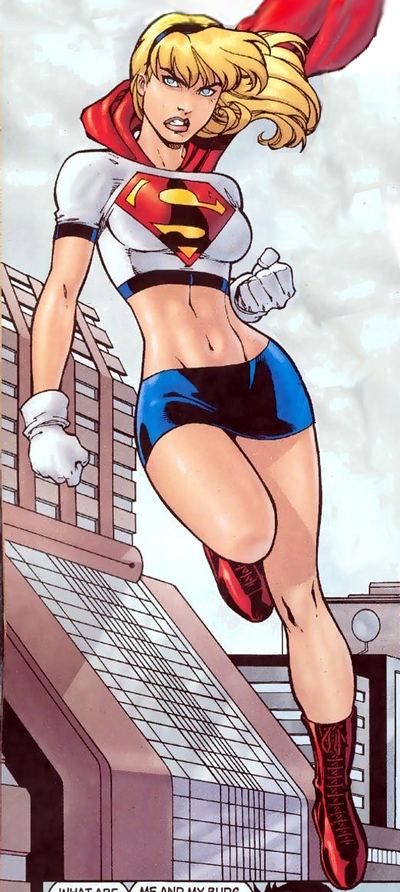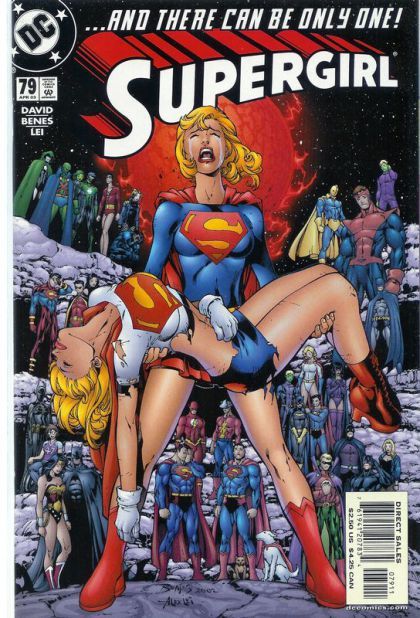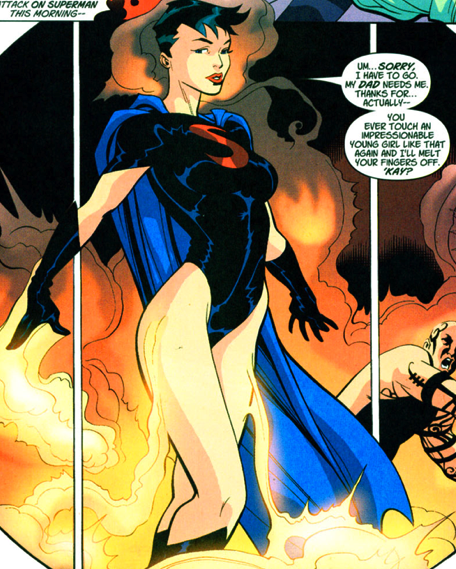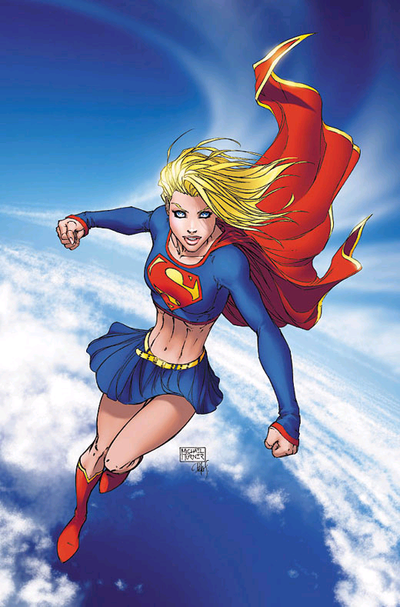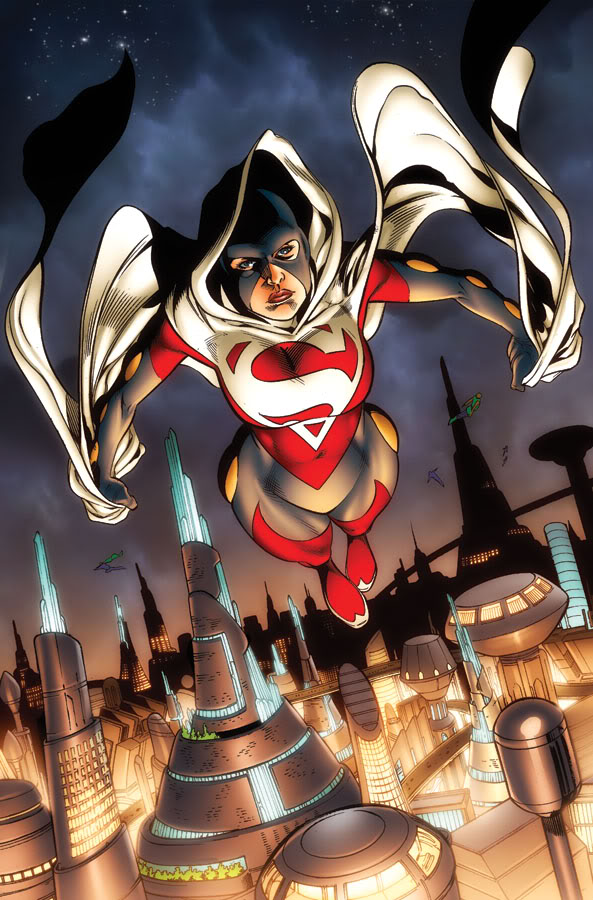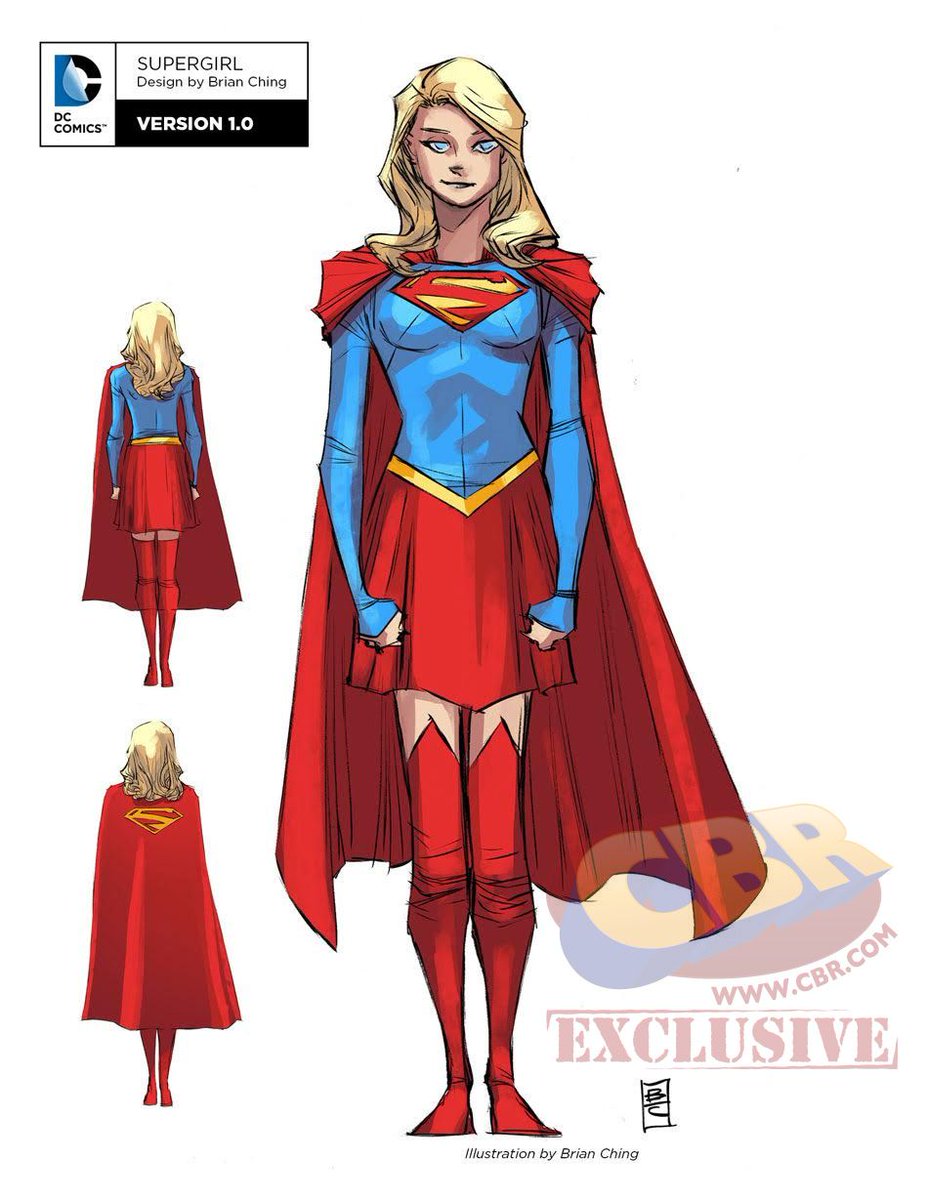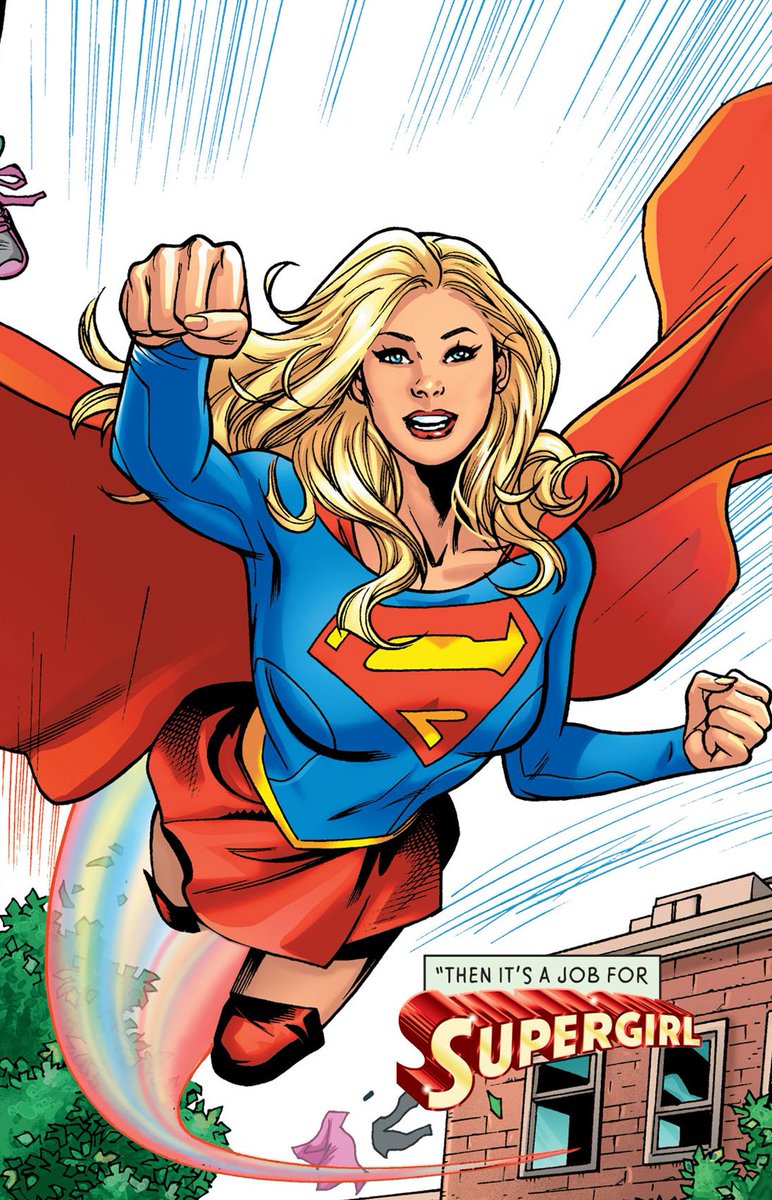When I did my brief history of Superman I said it was the setup for other threads I wanted to do.
This is not one of them.
This is something I realized I SHOULD do because otherwise people might feel I skipped out.
So today we& #39;re going to talk about Supergirl.
ALL OF THEM
This is not one of them.
This is something I realized I SHOULD do because otherwise people might feel I skipped out.
So today we& #39;re going to talk about Supergirl.
ALL OF THEM
Why?
Because after Lois, I think Supergirl is the single most iconic and popular of the Superman family, and I& #39;d be remiss if I didn& #39;t cover her history like I did with Kal& #39;s.
This does NOT mean I& #39;m going to cover every high-profile Superman character like this!
Because after Lois, I think Supergirl is the single most iconic and popular of the Superman family, and I& #39;d be remiss if I didn& #39;t cover her history like I did with Kal& #39;s.
This does NOT mean I& #39;m going to cover every high-profile Superman character like this!
And in order to understand Supergirl, we need to start with Otto Binder.
A lifelong science fiction fan, writer of pulp fiction and comic books, Binder was an extremely prolific writer. In the 1940s, he wrote for Fawcett Comics& #39; Captain Marvel franchise, creating many ideas...
A lifelong science fiction fan, writer of pulp fiction and comic books, Binder was an extremely prolific writer. In the 1940s, he wrote for Fawcett Comics& #39; Captain Marvel franchise, creating many ideas...
...and concepts which are still part of the Shazam iconography today.
One of these was Mary Marvel, Billy& #39;s long-lost sister. Endowed with the powers of six goddesses, she became the third member of the core Marvel Family, starting with her debut in 1942.
One of these was Mary Marvel, Billy& #39;s long-lost sister. Endowed with the powers of six goddesses, she became the third member of the core Marvel Family, starting with her debut in 1942.
Mary shared the same wholesome values and cartoony style as the rest of the Shazam strips and was a hit, having several solo strips as well as her team-up roles. After the disastrous lawsuit from DC in 1953, Mary vanished with her family.
But Otto Binder did not. Remember him.
But Otto Binder did not. Remember him.
In another sense, Supergirl& #39;s story begins with Lois Lane.
There were countless proto-Supergirls in the Superman comics, the first of which was a dream in which Lois became "Superwoman" in Action Comics #60, 1943 (perhaps inspired by Mary& #39;s stories?)
There were countless proto-Supergirls in the Superman comics, the first of which was a dream in which Lois became "Superwoman" in Action Comics #60, 1943 (perhaps inspired by Mary& #39;s stories?)
Lois would have several stories as an imaginary/non-powered Superwoman until Action #156, 1951 in which she actually gained powers equal to Kal& #39;s and wore a blonde wig and a "chic" costume as Superwoman. She of course lost her powers in all these stories, if she even had any.
Two years earlier, DC had also experimented with the "Supergirl" name, featuring a story in Superboy #5, 1949 in which Superboy makes it appear that a girl named Lucy has all his powers through trickery (a concept also used in one of the Lois Superwoman stories).
In 1958 we got Superman #123, "The Three Magic Wishes". In this story Jimmy Olsen gains a magic totem and uses the titular three wishes to try to make Superman& #39;s life better. Being the silver age, the wishes all go haywire and weird things happen.
One of the three stories in this issue was one where Jimmy conjured up "Super-Girl", a blonde girl in a very familiar costume. Exposed to Kryptonite, this magical Super-Girl dies and vanishes back into the aether.
The writer of this story? Otto Binder.
The writer of this story? Otto Binder.
Finally, after over a decade of false starts, the real Supergirl made her debut in Action Comics #252, 1959 by Otto Binder and Al Plastino. This was the real deal, Superman& #39;s long-lost cousin from the city of Argo which escaped the destruction of Krypton.
And surprisingly enough, Kara Zor-El stuck around! She was given a human identity as "Linda Lee", and for the first few years of her existence she lived in a Smallville orphanage where she would act as Superman& #39;s ace-in-the-hole whenever he had some trouble he couldn& #39;t handle.
She was quickly adopted from the orphanage by Edna and Fred Danvers and became Linda Lee Danvers for the duration of her existence. In Action #285, 1962 Superman revealed her to the world and she quickly became a famous superheroine in her own right.
Binder& #39;s Supergirl was a very wholesome, honest and brave girl, clearly a thinly veiled Mary Marvel for the Superman mythos. She appeared many times in the 60& #39;s, most notably as a backup in Action Comics where she fought evil aliens and Kryptonians such as Lesla-Lar.
Early on in her run she had also tried and failed to join the Legion of Superheroes, but she was eventually inducted and served for many years. Here she met a young Coluan named Brainiac 5, and tho their first meeting was filled with suspicion, the two quickly fell for each other
During the 60s, Supergirl& #39;s most notable artist was Jim Mooney, who very much defined the look of Kara and her strips. After Lesla-Lar& #39;s ignomious death she also fought villains like the Black Flame, though none stuck around like Superman& #39;s foes did.
This is also the period when Supergirl picked up her (in?)famous pets, Streaky the Supercat and Comet the Superhorse. Comet was of course a centaur who was transformed into a full horse by the enchantress Circe and who secretly loved Kara but couldn& #39;t... oh no... oh no we& #39;re...
Okay so in Action Comics #289, 1962, Jerry Siegel and Jim Mooney told the story of when Kara really REALLY wanted to get Kal laid. She quickly dismissed earth women as unsuitable, and tried to hook Superman up with Saturn Woman (the adult Saturn Girl) and when Kal revealed he...
... just sorta wanted someone like HER, she went and found him a woman who was her physical double, but an adult and uh... not... closely related. Luma Lynai, the Superwoman of Staryl. Look, silver age Superman went strangely psychosexual sometimes.
(Violent changing of topic)
Even in the 60& #39;s it was generally accepted that Kara would one day become Superwoman and take over for Kal, something that was explored in many "Imaginary stories" of the era.
Even in the 60& #39;s it was generally accepted that Kara would one day become Superwoman and take over for Kal, something that was explored in many "Imaginary stories" of the era.
With the Legion moving out, Kara abandoned Action and became Adventure Comic& #39;s new headliner with issue #381, 1969. This also heralded a change in the style and tone of the Supergirl stories in tune with the dawn of the bronze age.
For one, it saw Supergirl change her wardrobe. Gone was the simple, modest skirt and instead she wore a plethora of "hip" new outfits, many of which were submissions by fans. Suffice to say it took a lot more effort to get your fanart noted back then!
Her strip was handled by a number of writers and artists, most of which also worked in the regular Superman comics, and the costume situation eventually resolved itself with the introduction of this number, which would become Kara& #39;s iconic 70& #39;s getup.
This era also saw Supergirl graduate to her self-titled comic for the first time ever in 1972, which ran for a measly 10 issues before being absorbed into Superman Family in 1975. The stories in this era were a lot more "modern" and less innocent than the Silver Age ones.
The end of the 70& #39;s saw Kara reduced back to guest appearances in other titles, and also saw the introduction of the first true alternate version of her, namely her Earth-2 counterpart Power Girl who first appeared in All-Star Comics #58, 1978.
It seemed Supergirl& #39;s star was fading with each new strip less popular than the previous one, but she was rescued from Barbara Gordon& #39;s fate by the rumblings of a Hollywood Supergirl movie, spinning off from the ultra-popular Superman movies.
Though the movie would end up in development hell and not come out until 1984, scrubbed of any direct connection to the Christopher Reeve Superman, DC got a new Supergirl title out in 1982 titled "Daring New Adventures of Supergirl". This title lasted a full 23 issues.
DNAoS was the first Supergirl strip to try to integrate into the greater DC universe, with Kara interacting with other 1980s heroes and villains, even having the New Teen Titans as guest stars. It also introduced yet another set of villains for her such as Blackstarr, the Gang...
...Matrix-Prime and especially Reactron, a nuclear-powered foe who it took both Supergirl and the Doom Patrol to beat. This guy is perhaps the one Supergirl villain to have gained any real traction.
In issue #13 of DNAoS, Kara finally ditched her disco waitress costume for this number, which with the later addition of a sweatband would become her costume for the rest of the 80& #39;s.
And by that I mean "the two remaining years before she died at the hands of the Anti-Monitor in Crisis on Infinite Earths #7". For anyone who had grown up with Supergirl, knowing she would one day be Kal& #39;s successor, this really was the shocker the cover promised.
The real reason for Kara& #39;s sudden and dramatic death was popularity. As noted, her strips and solo comics had suffered diminishing returns for over a decade, and DNAoS had flopped sales-wise. And so it was decided that rather than let her fade away, she would die.
I am not very emotional when I read comics, and despite how hokey a lot of Wolfman& #39;s writing is, Supergirl& #39;s funeral and Superman& #39;s nearly unpronounceable grief always get to me. I can& #39;t hate the story, and it would be the focus of several spin-off issues following Crisis.
...what I can hate is that her sacrifice was then forgotten as John Byrne& #39;s contract with DC allowed him to jettison and rewrite any part of the mythos he wanted. And one thing he was adamant about was NO OTHER KRYPTONIANS. So Kara was not just gone, she was forgotten.
... or was she?
Byrne& #39;s final arc suddenly introduced a Supergirl who looked like Kara but who Superman couldn& #39;t remember. The story set it up so you might think this was the Pre-Crisis Supergirl returned to the new canon somehow, but of course Byrne had other plans.
Byrne& #39;s final arc suddenly introduced a Supergirl who looked like Kara but who Superman couldn& #39;t remember. The story set it up so you might think this was the Pre-Crisis Supergirl returned to the new canon somehow, but of course Byrne had other plans.
Starting with Superman #21, 1988, Superman discovered this new Supergirl was actually a protoplasmic being from a pocket universe created by Lex Luthor using the brain patterns of that universe& #39;s deceased Lana Lang. Yeaaaaaaaah. If you were hoping for Kara to return...
The climax of the story in Superman #23 saw this Supergirl reduced back to "Matrix", her original state, and given to the Kents to take care of. And then Byrne left the titles, leaving this mess for anyone to handle as they saw fit.
As a side note, I have read a few theories claiming that Sensor Girl, who Paul Levitz introduced into the Legion in 1985 was originally meant to be Kara Zor-El, rescued through time travel by Brainiac 5 and now living incognito in the future to preserve the story of her "death"
...though we see that not even Brainiac 5 knows her eventually. But this seems to never have been more than a red herring to tease readers as I haven& #39;t found any interview with Levitz that talks about this. Perhaps it was a fantasy of his that didn& #39;t work out.
I would also be remiss if I didn& #39;t mention Christmas with the Superheroes #2, 1989 in which Alan Brennert and Stephan deStephano told the story of Deadman meeting a strange blonde girl on christmas.
And I& #39;ll let this final page speak for itself because goddamn.
And I& #39;ll let this final page speak for itself because goddamn.
After recovering most of her memories, Matrix left for space, became a Superman clone for a bit, and then returned to Earth and her Supergirl form in the "Panic in the Sky" story arc in 1992. Here she met and fell for Lex Luthor in his youthful clone body, and became his lover.
She fought Doomsday, realized Lex was evil and rebelled against him, found new forms to use in battle and even had a mini-series of her own in 1994. But she was still that weird extradimensional blob-creature until one writer came along to give her new purpose...
But before we dive into Linda Danvers, I want to point out that Dan Jurgens created his own take on Kara in Superman/Aliens in 1995 together with Kevin Nowlan. This Kara was not explicitly Kryptonian but a survivor found on a destroyed alien colony plagued by xenomorphs.
Though initially distrustful of Superman, this Kara helped him and the end of the story promised that she might come to Earth one day as there was nothing left for her. If Jurgens ever intended to tell this story, it never happened and this Kara was forgotten.
Starting with Showcase 96 #8, Peter David took over the writing of Supergirl, graduating her to her own ongoing series in 1997 together with artist Gary Frank. This series revealed that Matrix had merged her protoplasm with a dying woman named Linda Danvers, and together...
...they became a new Supergirl, one that was a lot more troubled and human than her Matrix incarnation. This series is REALLY GOOD you guys and it absolutely does not require you to know anything about the Byrne mess and weird origin of the character. I highly recommend...
...just picking it up and reading it.
Without spoilering anything major, eventually, Linda and the Matrix/Supergirl entity were separated, and with leftover powers Linda became Supergirl alone, wearing the costume of the DCAU Supergirl.
Without spoilering anything major, eventually, Linda and the Matrix/Supergirl entity were separated, and with leftover powers Linda became Supergirl alone, wearing the costume of the DCAU Supergirl.
This more earthbound Supergirl era ended with a story called "Many Happy Returns", where Linda through time messiness meets a young Kara Zor-El, just arriving from Argo City. A naive, Silver Age powerful Kara Zor-El.
Ending with issue #80 in 2003, Linda& #39;s stint as Supergirl put the character back on the map together with the DCAU Supergirl. And though Linda has appeared in other roles and cameos, she rather quickly vanished from the comics despite her long tenure, because...
Well, first off there was the short-lived, doomed Cir-El who debuted in Superman The Ten Cent Adventure in 2003 by Steve Seagle and Scott McDaniel, but due to editorial meddling she was quickly retconned and written out, barely a footnote in the Superman mythos.
But Linda and Cir-El were doomed, as Superman/Batman #8 in 2004 finally reintroduced (another) Kara Zor-El to canon from the team of Jeph Loeb and Michael Turner. Arriving on the post-Crisis earth, she is immediately a more sexualized, aggressive Supergirl for his particular era.
This Kara enjoyed a lot of raunchy adventures in her first years, such as becoming Darkseid& #39;s henchwoman, dating supervillains and discovering she was trained as a weapon to kill Superman by her father and also had weird extra powers.
Thankfully (in my opinion), this new Kara was toned down a few years later, becoming more of a standard heroine and getting a new origin which omitted the strange, tormented living weapon idea for a more Silver Age inspired story.
This all led into the New Kandor arc, where Kara reunited with her mother, only to lose her in the most painful way to Reactron, who destroyed New Kandor (Remember him?). She also fought the superpowered Lucy Lane, who had Lois& #39; old Superwoman moniker.
Of course the post-Crisis era also had countless other AU Supergirls and alternate future Supergirls, far beyond the scope of this article such as Ariella Kent, the Supergirl of DC 1 million.
With the cataclysmic end to the Post-Crisis canon, Supergirl was one of the characters to survive relatively intact, gaining a new book and a new costume for the New 52 which generally kept a Silver Age inspired origin for her.
And with DC Rebirth, she gained a new costume that was a blend of her original Silver Age one and the 1980& #39;s and Post-Crisis suits, which she generally has stuck with since. And that more or less brings us up to date.
Today she has had a long-running TV show, a movie, many cartoon apperances, toys and games under her belt, which is impressive for a character that DC considered obsolete in 1985.
Here& #39;s to many more, Supergirl, whoever you are. And thanks Otto, for believing a girl can fly too
Here& #39;s to many more, Supergirl, whoever you are. And thanks Otto, for believing a girl can fly too

 Read on Twitter
Read on Twitter
